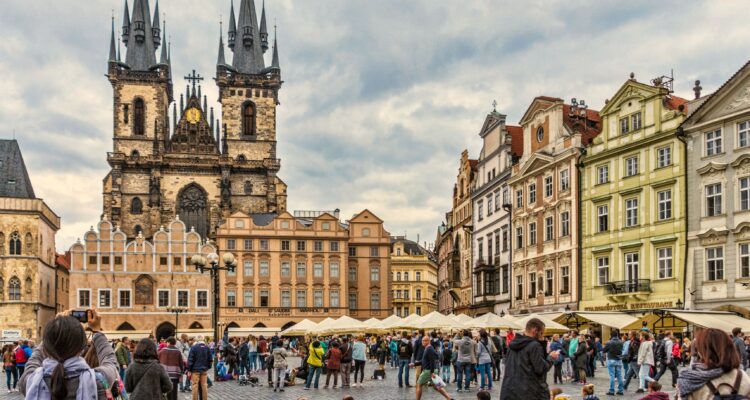Prague is steeped in history, culture, and art. “The Golden City” has become one of Europe’s top ten travel destinations, courtesy of its unique blend of Gothic, Baroque, and Renaissance architecture, stunning vistas, and thriving nightlife.
The Czech capital is the epitome of Bohemian, literally, having been built at the heart of Medievil Bohemia over a thousand years ago. Prague sprang up from around the 10th century Vyšehrad Castle, and it’s grown into a cosmopolitan and contemporary city. With soaring historic castles and Cathedrals, high-end and trendy boutiques and bars, upscale and quirky hotels, and world-class museums and art galleries — it’s the perfect mix of ancient and modern.

It’s easy to get lost wandering around the myriad of narrow winding cobbled streets. Still, walking around and getting lost is the best way to fully appreciate the city. But, before you lace up your hiking boots and hit the streets, check out our Prague — Insider Guide to the City of a Hundred Spires.
Talking about a revolution
The New Town quarter (Nové Město) was built by the Holy Roman Emporer, Charles IV, in 1348. It’s located in Prague’s historic center, on the perimeter of the Old Town city walls.
Wenceslas Square, one of the city’s grandest and oldest squares and a hub for public celebrations and political demonstrations alike, is in The New Town. It was at the epicenter of Czechoslovakia’s Velvet Revolution, which started in 1989, eight days after the fall of the Berlin Wall. An estimated 500,000 citizens took to the square to protest the country’s Communist rule. Within just weeks, they had succeeded in ousting Gustáv Husák’s regime.
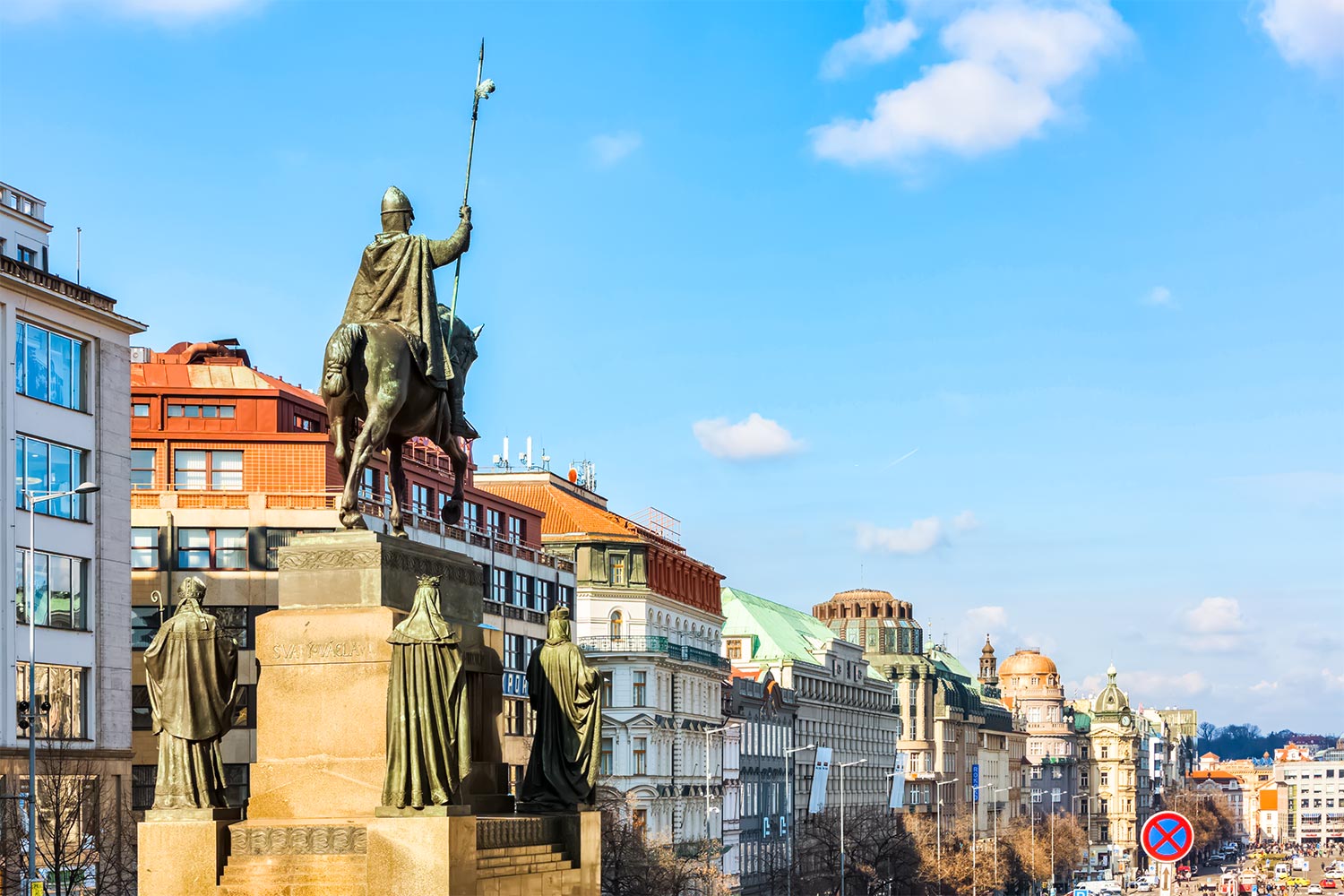
Wenceslas Square (Václavské náměstí), Prague, Czechia
The Communists were finally gone after more than 40 years of brutal, totalitarian rule, but they aren’t forgotten. Wenceslas Square is home to The Museum of Communism (Muzeum Komunismu). It offers a fascinating and chilling insight into what daily life was like in Communist-era Czechoslovakia.
Located nearby is The National Museum (Národní Muzeum). The stunning and grand Neo-Renaissance building boasts a dazzling array of historical exhibits, artifacts, and artworks.
You also get to experience the Gothic glory that is The Charles Bridge (Karlův most). Construction of the medieval stone arch, which spans the Vltava river, was started in 1357 under the orders of Charles IV. It was finally completed in the early 15th century, and it’s easy to see why it took so bloody long to finish. The bridge is majestic and splendid. Flanked by a continuous alley of 30 ornate and intricate Baroque-style statues and statuaries — even somebody who’s not a “bridge person” couldn’t fail to appreciate the graceful beauty.

Stroll back in time
The Old Town (Stare Mesto) is, not surprisingly given its name, one of the most historic, medieval neighborhoods in Prague. It’s usually packed with more than its fair share of tourists, but that doesn’t make it any less of a must-visit as it’s also packed full of treasures.
The area is home to the beautiful Križovnický square, which offers stunning views of Prague Castle. There’s also the glorious Municipal House (Obecní dům) which sits on what used to be the Royal Court Palace and is one of the world’s finest Art Nouveau buildings — both inside and out. It houses a concert hall, in addition to a bar, restaurant, and café.
Then there’s the awesome House at the Black Madonna (U Černé Matky Boží) which is the first example of Cubist architecture. The building used to be a department store, but now it’s home to a cool little café and The Museum of Decorative Arts. Its ornately hand-painted and gilded interior is exquisite.

However, upping the exquisite ante yet further is the flamboyant and grand Estates Theatre (Stavovské divadlo) which holds regular opera, drama, and ballet performances. It’s home to the Czech National Symphony Orchestra and Mozart premiered his famed opera, Don Giovanni, there in 1787. So, it’s safe to say it’s well and truly earned its culture and history stripes.
When you’re all cultured out there’s an array of restaurants, boutiques, bars, cafés, and clubs to explore in the neighborhood too. Picturesque and party-ready, The Old Town’s guaranteed to please all and sundry.
Get surreal
The Bohemian surrealist novelist Franz Kafka was born in Prague. You can visit the place he grew up in as a child, it’s located beside the St. Nicholas Church in The Old Town, on the edge of what used to be the Jewish ghetto. The actual house he lived in was burned down years ago, but there’s still a striking and majestic doorway that remains — and a little plaque that memorializes the site as his place of birth. In the summer there’s also a cute little café, where you can sip on a Můj Šálek Kávy while you turn the pages of “The Metamorphosis” which was written by the great man himself.
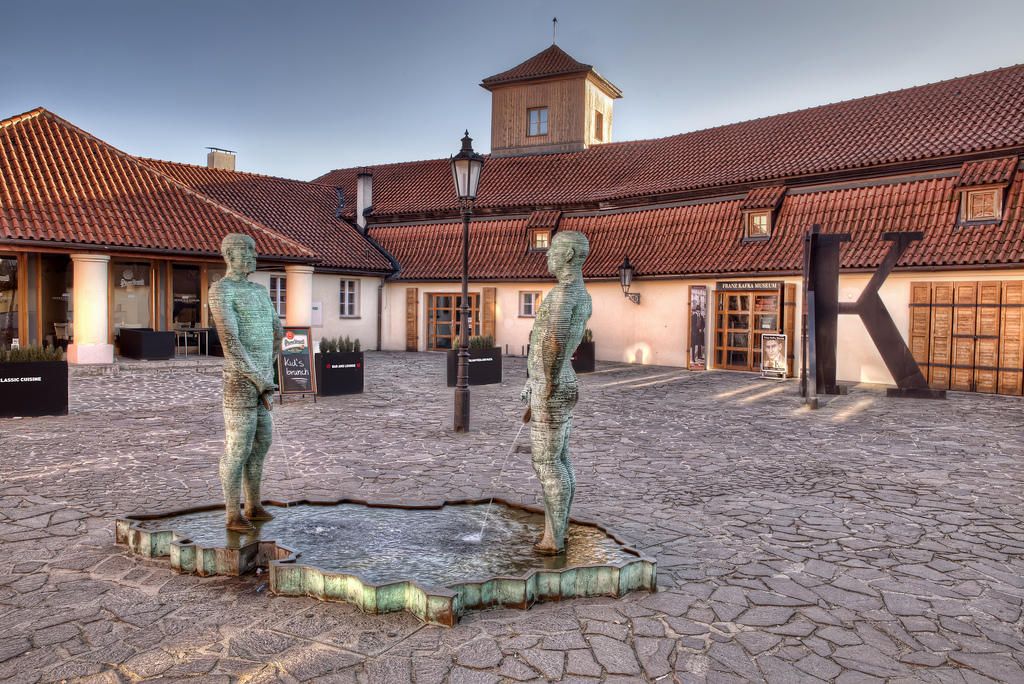
If you really want to get your surreal on though, head to the Kafka Museum. As soon as you enter you feel like you’ve stepped into the bizarre mind of the famed writer. The exhibitions lead you on a journey through Kafka’s life and work, via a series of weird little darkened rooms, unexpected mirrors, and creepy little film clips.
Fittingly, directly outside of the museum, there are two sculptures by the Czech sculptor David Černý. One comprises his infamous creepy giant babies — with slots in place of their faces. The other is composed of two dudes peeing into a pond in the shape of the Czech flag.
Books brews and views
Strahov Monastery (Strahovský klášter) is the oldest Premonstratensian monastery in Bohemia — founded in 1143 — and one of the most important architectural landmarks in the Czech Republic.
In addition to its grand exterior, it offers fabulous views of the city below, and the interior is utterly breathtaking. Strahov also houses one of the most beautiful libraries in the world, stocked full of old books, illuminated manuscripts, curiosities, and rare artifacts from the Renaissance and Enlightenment periods.
If that’s not enough, there’s also an art museum, a basilica, the Museum of Miniatures, the Galerie MIRO, and, best of all, a brewery. There’s a beer hall that serves the brewery’s IPAs and wheat beers, along with a cute little courtyard garden.
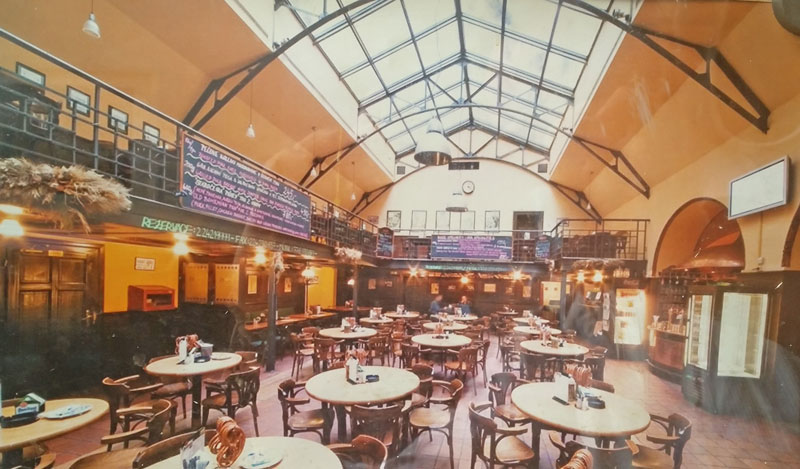
Bunker down
Sure, it’s a guided tour, and usually guided tours are hell on earth, but sometimes there are exceptions to the rule. The Nuclear Bunker Tour is one of them, yes, really.
A leftover relic from the Cold War era, the Soviet bunker was built in the 1950s for people to shelter in the event of a nuclear attack. It’s located five stories under the ground and you get to wander through the dark creepy tunnels — and to experience (a little of) the fear and dread that accompanied everyday life during that period of Czechoslovakia’s history. The ambiance is truly eery and it definitely evokes the paranoia and violence of the Soviet-ruled times. There’s also a little museum/play area, that’s filled with communist-era memorabilia, like gas masks, medical kits, weapons, and uniforms.
Best of all? At night the bunker transforms into a club, so you can get your communist creep and cocktail on, all at the same time. #Winning!
Give peace a chance
The Lesser Town quarter (Malá Strana) is home to the extravagant 17th century Baroque Wallenstein Palace (Valdštejnský palác) that now houses the Czech Senate. The palace is surrounded by formal European-style gardens that offer a peaceful and tranquil respite from the buzz of the city.
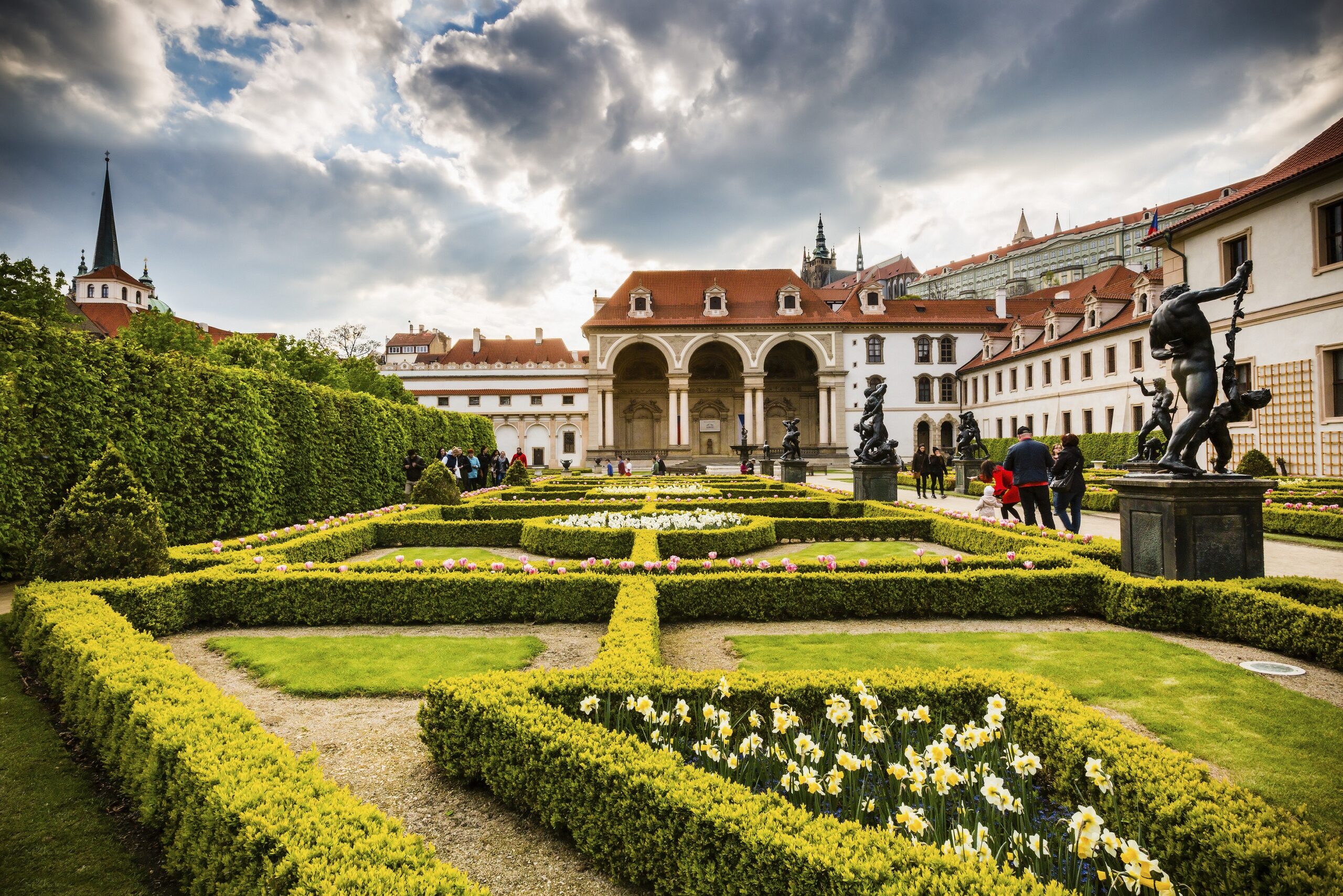
There’s also Prague Castle, which is one of the largest citadels in the world. The castle is the resting place of the crown jewels of the Bohemian Kingdom. Throughout history, presidents, kings, and noblemen had their offices there, in addition to several Holy Roman Emperors. So yeah, it’s suitably fancy and regal.
But if you’re more into pop culture than pomp and history, head to The Lennon Wall. Following his murder in 1980, the former Beatle became a figurehead of peace and a pacifist hero for young Czechs struggling with life under Communist rule. They painted a mural of Lennon on a wall in a secluded square opposite the French Embassy. Over time the wall was also filled with graffiti opposing Gustáv Husák’s communist regime in addition to the lyrics of Beatles’ songs. The Státní bezpečnost (secret police) was constantly whitewashing the wall — literally, with coats of paint — but their efforts were in vain as the graffiti would quickly reappear. The Lenon Wall became a symbol of resistance as music by Western bands, such as The Beatles, was banned in the Eastern bloc, with musicians even being imprisoned for playing it.
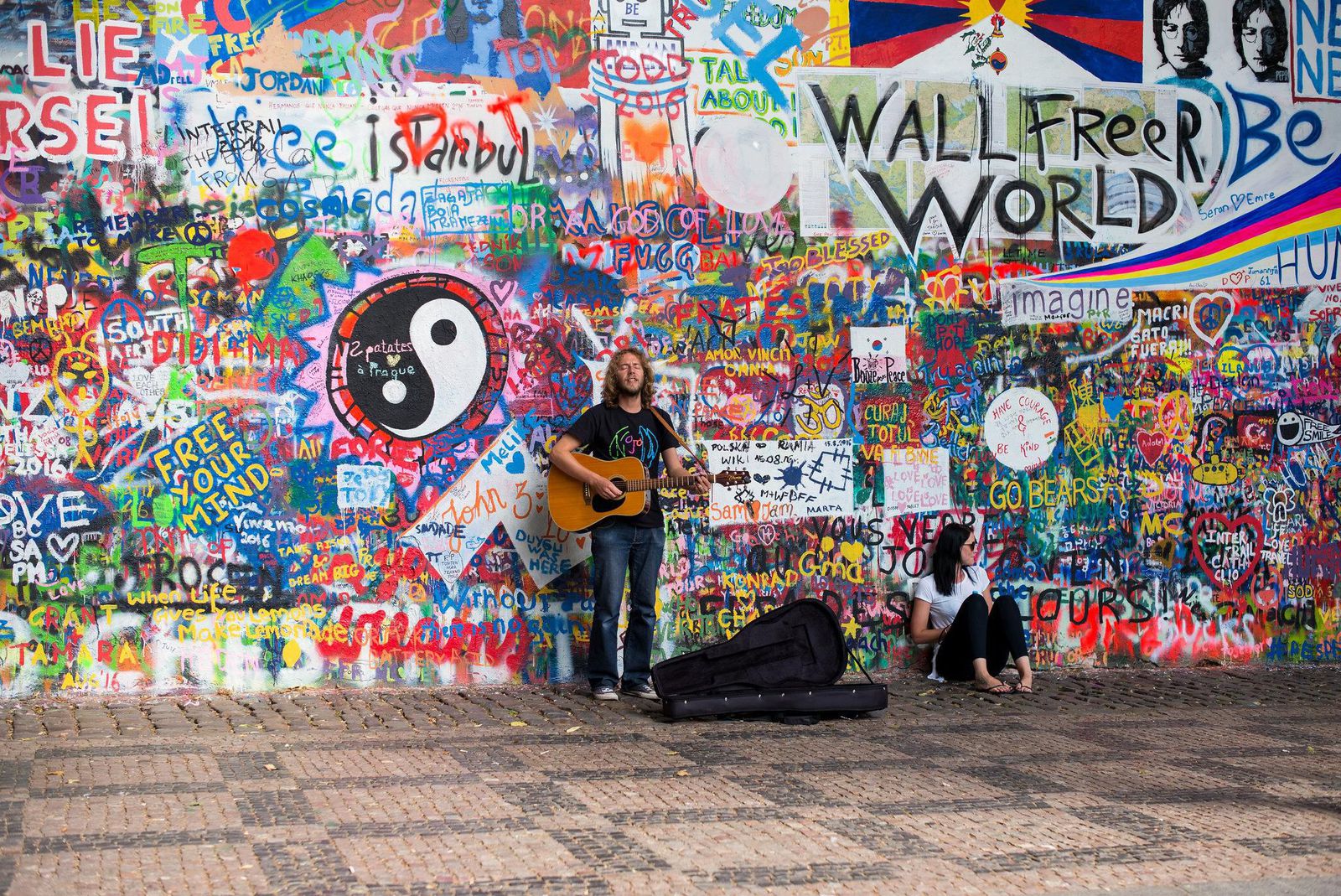
Following in the footsteps of Lennon’s message of all you need is love, just steps away from the wall is Prague’s Love Lock Bridge. The pedestrian overpass is littered with little padlocks, placed there by couples to symbolize and memorialize their love for each other. It’s super cute and sweet and guaranteed to at least temporarily brighten even the most blackened withered heart.
Eat drink and be merry
The Czech Republic is renowned for its many world-class beers, including its famous Pilsner Urquell that’s brewed exclusively in Plzeň, the country’s top brewery.
But, Czechoslovakia is gaining a reputation for its wines too, especially those from the Moravian region. The Modrý Portugal label, which comes from the Jaroslav Osička winery, is divine, especially the fruity red blends. Definitely worth a sklenka or four during a night out on the town (or day — I’m not judgin’.)
Prague has a thriving street food scene with a veritable smorgasbord of yummy fare to feast on. If you’re only going to try one thing though, then make it Trdelnik. The walnut and sugar-coated grilled-dough pastry is mouthwateringly divine, and it’s sold all over the city, on every street corner pretty much.

When in Czechoslovakia you have to eat goulash at least once —because, Czechoslovakia duh! The beef stew is served two different ways, on a plate with dumplings or as a soup. Both are delicious, and both are definitely on the heavy side, and definitely best accompanied by an icy cold Pilsner.
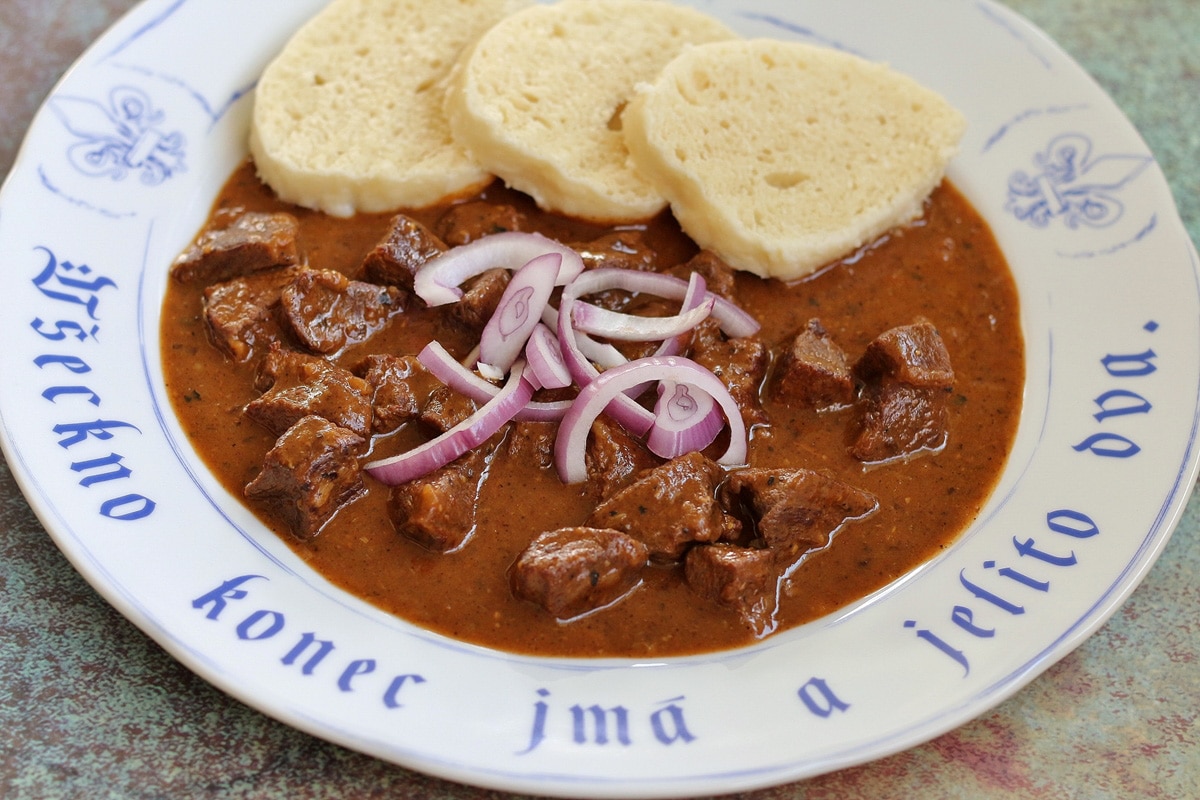
When it comes to drinking options, Prague has a motherload. Czech-style absinth (yes, spelled without the usual “e” on the end) is a Bohemian version of the traditional absinthe. There’s a slew of absinth bars dotted all over the city but for the best, and most authentic experience, stop by Absintherie, which has two separate locations. The self-styled “Mecca of absinth” serves over 100 varieties and lives up to its boast of being “the perfect place to taste the power of the legendary drink.” Needless to say, leave your car keys behind.
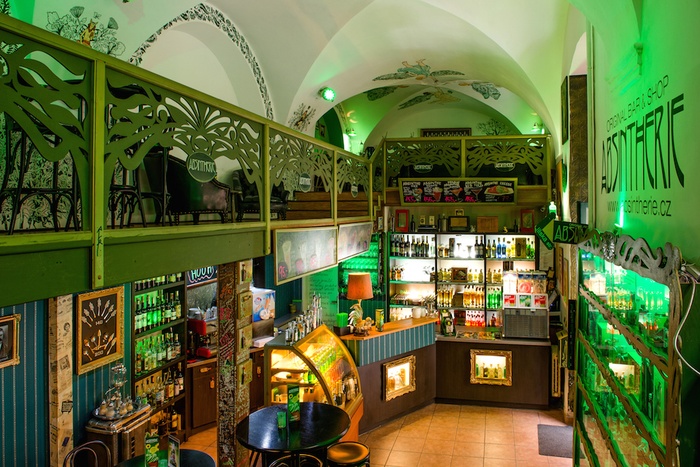
If you’re hankering for a fancy eating experience then stop by Café Louvre. The elegant and historic restaurant is decorated in the style of the “First Republic,” and it’s been serving customers for over a century. Among the list of many famous diners throughout its 100 years of business are Franz Kafka and Albert Einstein.
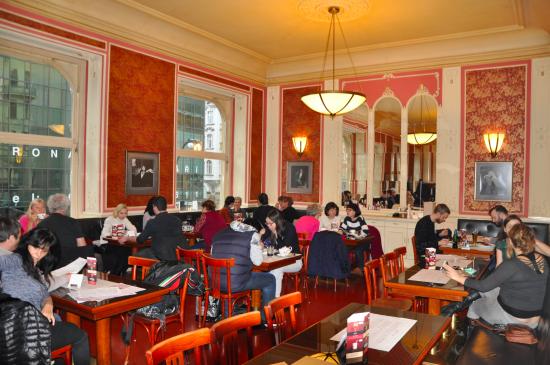
Prague also has a well-earned reputation for being a clubbers’ paradise. The five-story-high Karlovy Lázně is the biggest club in Central Europe, with different music styles and themes on each of its floors. There’s also a fog screen and an oxygen bar, and if you’re feeling a little partied out there’s a super cool chill-out room.

